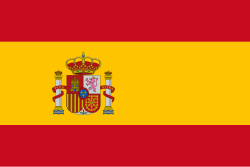When the goal starts to play, Lidia Beltrán “expels” the Parkinson‘s disease that numbs her. She hugs her therapist and dances with meticulous fluidity alongside other patients in an innovative treatment promoted by a public hospital in Buenos Aires, Argentina.
Some 200 patients have attended the tango workshops that Ramos Mejia Hospital has organized for 15 years to study its impact on the progression of symptoms of this incurable neurodegenerative disease. To provide rehabilitation tools, explained the team of neurologists in charge.
“One of the main problems of the disease is gait disorders, and tango, as a walking dance, works on stopping and starting steps and strategies for walking around the dance floor,” explained neurologist Nélida Garretto, one of the project’s promoters.
The goal, in addition to research, is for patients to learn strategies to improve their quality of life. The results have been encouraging. Many find ways to alleviate symptoms, such as the motor block in their feet that “freezes” their gait, said neurologist Tomoko Arakaki.
“There’s a patient who told us that when she freezes, she tries to make a figure eight—one of the classic tango figures—with her feet, and that allows her to break free from the freeze. Tango helps build a sensory pathway that helps them walk,” she explained.
She added to the conversation: “We know that Parkinson’s requires pharmacological treatments. Tango is used to rehabilitate the motor skills. Music can help you get out of complex situations.”
At 66, Beltrán, diagnosed two years ago, had never danced tango and started the workshop on medical advice. “If it’s to stop the progression, I have to do it. You have to dance life,” she said.
In addition to tremors, poor balance, stiffness, and a muffled voice, Parkinson’s often leads to social isolation and depression. The workshop is a stimulus to avoid this. Beltrán reported that it helped her improve her stability, but also her mood. “Tomorrow I’m sure I’ll feel better because I danced tango today,” she noted.
THE DANCE THERAPISTS
Each patient dances with a healthy person, guided by dance therapists like Manuco Firmani. An accomplished tango dancer who has been alternating stages with this project since 2011.
Emilia, 86, prefers not to give her last name because she attends against the wishes of her son. Who reproaches her for the two-hour bus ride she has to take to get to the salon in downtown Buenos Aires.
“For me, it’s the happiness of every Tuesday,” says this retired teacher with a frail, bent body in a very low voice, for whom tango brings back memories of her youth. The workshop was held until December in a hospital room, and a next edition is being organized.
“Every year we conduct specific evaluations to analyze the benefits of tango. We have measured improvements in cognitive, motor, gait, and balance skills,” explained neurologist Sergio Rodríguez.
“THERE ARE MANY SIMULTANEOUS MESSAGES”
According to experts in this typical dance from the Rio de la Plata region, the secret of tango is walking. But that’s not the only thing that makes it an effective tool for Parkinson’s rehabilitation.
It requires following a rhythm, dancing in a certain direction, and interpreting what the partner is asking you to do. There are “many simultaneous messages that must be resolved. Which is very positive in this disease where the difficulty often lies in resolving simultaneous things,” said Garretto.
At the end of the class, everyone bursts into applause and “an air of satisfaction is felt,” emphasized dance therapist Laura Segade. “After all, who can take away what they’ve danced?”
With information from agencies and NEWSWEEK magazine
- Sound Engineers in Holguin: Architects of Silence - 4 de December de 2025
- Minister of Public Health Visits Lenin Hospital in Holguin - 4 de December de 2025
- Urbano Noris Welcomes New Generation of Doctors - 4 de December de 2025

